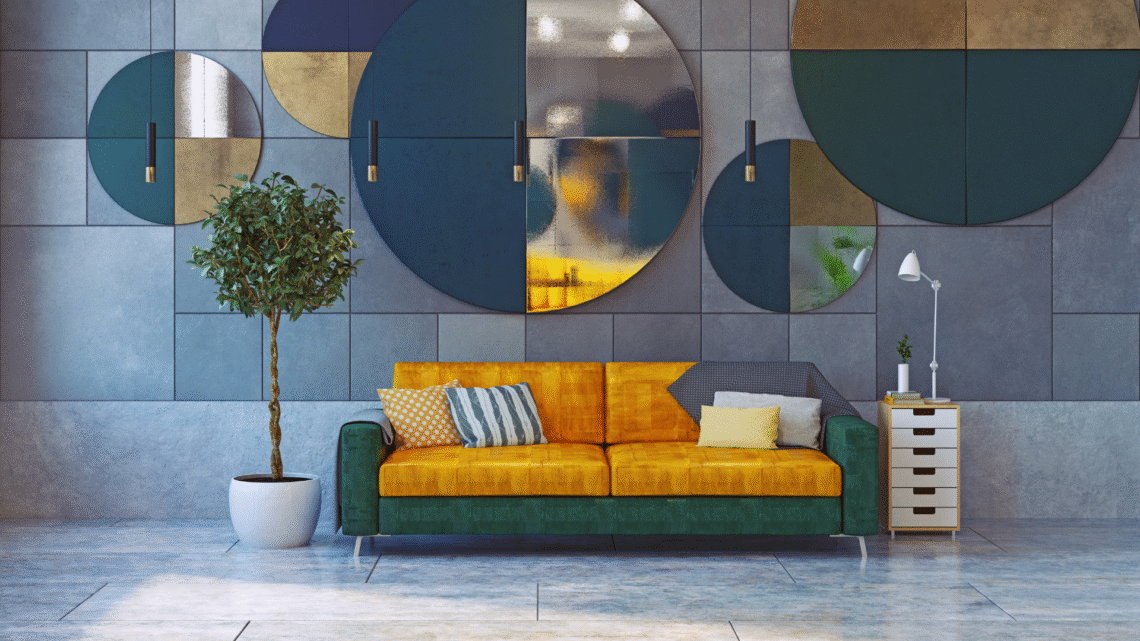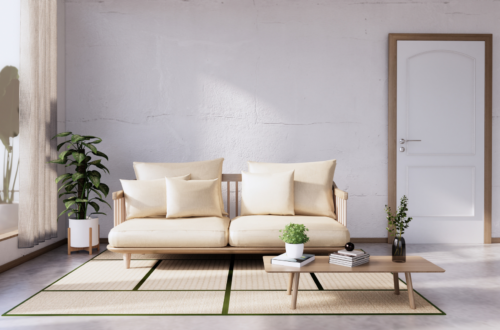
How to Blend Traditional and Contemporary Styles in Home Design for Timeless Appeal
Blending traditional and contemporary styles in home design creates a unique aesthetic that showcases personal taste while respecting history. By thoughtfully merging classic elements with modern design, homeowners can achieve a harmonious space that feels both timeless and fresh. This approach invites a variety of textures, colours, and furniture styles that complement each other, resulting in a cohesive look.
Interior design becomes an art form when balancing old and new. Vintage furniture can be paired with minimalist accessories, while bold contemporary art can adorn walls lined with traditional wainscoting. This fusion not only enhances visual appeal but also reflects the homeowner’s personality and lifestyle choices.
Understanding key principles of both styles is essential for achieving this blend effectively. A focus on proportion, scale, and colour palette can help ensure that traditional and contemporary elements enhance rather than clash with one another. With careful consideration, a space can embody both a rich heritage and a modern flair.
Fundamental Principles of Blending Traditional and Contemporary Styles
Combining traditional and contemporary styles in home design requires an understanding of both design languages. By recognising key elements and aiming for a balanced approach, a harmonious and aesthetically pleasing environment can be achieved.
Understanding Traditional and Contemporary Design
Traditional design is characterised by classic details, ornate furniture, and rich textures. Features such as mouldings, antique pieces, and warm colour palettes create an inviting atmosphere. Conversely, contemporary styles prioritise minimalism, functionality, and sleek lines, often using neutral colours and innovative materials.
Identifying the key attributes of each style is essential. Traditional elements tend to evoke nostalgia, while contemporary designs often foster a sense of modernity. Successful blending requires discerning which features reinforce the intended aesthetic without overwhelming the space.
Key Elements of Transitional Design
Transitional design serves as a bridge between the two styles. It combines the comfort of traditional furnishings with the sophistication of contemporary aesthetics. Key elements include softer lines, neutral colour schemes, and a mix of textures.
Furnishings like a traditional chair can be accented with modern cushions, while contemporary artwork can be displayed on traditional moulded walls. Using elements from both styles creates a space that is cohesive and inviting. This principle allows for flexibility and personal expression without compromising on design integrity.
Achieving a Harmonious Blend
To achieve a harmonious blend, scale and proportion play vital roles. Large, ornate furniture can be visually balanced by incorporating sleek, minimalistic pieces. Spaces often benefit from a central focal point that draws the eye.
Incorporating natural light enhances the design’s appeal. Wide, unobstructed windows can showcase traditional curtains alongside contemporary blinds. Mixing materials such as wood, glass, and metal provides depth and interest, allowing the two styles to coexist seamlessly.
The Role of Simplicity and Clean Lines
Simplicity and clean lines are fundamental principles in contemporary design that can effectively enhance traditional spaces. By choosing furniture with straight, sleek lines, the visual weight of traditional pieces can be balanced.
Neutral colour palettes are crucial. They serve as a backdrop that allows traditional details to stand out without competing with contemporary elements. Integrating simplicity through decor items, such as minimalist light fixtures or simple wall art, creates a unified environment.
Emphasising these principles will result in a home that feels cohesive yet diverse, representing both heritage and modernity.
Creating Cohesion with Colour, Materials, and Texture
Achieving harmony between traditional and contemporary styles involves careful consideration of colour, materials, and textures. By selecting a unified colour palette, thoughtfully mixing materials, and incorporating various textures, one can create a seamless blend that enhances the overall design.
Selecting a Balanced Colour Palette
Choosing a colour palette is crucial in uniting diverse styles. A balanced approach often includes a combination of neutral tones and accent colours. For traditional elements, rich, warm hues such as deep greens or burgundies can add sophistication.
In contrast, contemporary designs benefit from cooler colours, such as soft greys or whites. Combining these palettes can be effective. For example, using a neutral base with pops of colour allows traditional furnishings to stand out without clashing with modern decor.
Consider using a colour wheel to identify complementary shades, ensuring visual cohesion throughout the space.
Mixing Materials and Finishes
The combination of materials and finishes adds depth to a design. Traditional styles often feature wood, brick, and stone, while contemporary designs lean toward metals and glass. Blending these materials can create a visually appealing contrast.
For instance, pairing a rustic wooden table with sleek metallic chairs combines old and new aesthetics.
When mixing finishes, aim for balance. A polished chrome lamp can complement a matte wooden side table. Consistent material themes, such as a unified metal finish across lighting fixtures and cabinet handles, can enhance the overall coherence of the design.
Incorporating Textures for Depth and Interest
Textures play a vital role in creating a dynamic environment. A mix of smooth, rough, soft, and hard textures can transform a space from flat to engaging.
Incorporating textiles such as linen or velvet alongside hard surfaces like marble or wood adds visual interest. For example, a plush velvet sofa can complement a sleek, glass coffee table.
Layering different textures fosters a sense of comfort and invites touch. Knitted throws, woven rugs, and metal accents create a tactile experience that is both welcoming and sophisticated. Moreover, choosing the right floor and carpet options can also be important to improve the texture of the space. A carpet, for instance, can bring warmth and softness underfoot for areas that are often used, such as living rooms or bedrooms. Balancing these elements effectively leads to a cohesive and appealing interior design.
Integrating Furniture, Accessories, and Artwork
Incorporating a mix of traditional and contemporary elements can elevate home design. This balance is achieved through careful selection of furniture, accessories, and art that complement each other while maintaining distinctive styles.
Choosing Furniture for Transitional Spaces
When selecting furniture for transitional spaces, it is crucial to find pieces that bridge the gap between traditional and contemporary styles. A good strategy is to opt for classic silhouettes that incorporate modern materials.
For instance, a traditional wingback chair can be upholstered in a bold, contemporary fabric. Mixing wood tones can also add depth; a vintage wooden dining table paired with sleek metal chairs offers an appealing contrast.
It’s essential to maintain a colour palette that harmonises both styles. Neutral shades with pops of colour can help furniture resonate within the overall design scheme.
Blending Accessories and Artwork
Accessories play a vital role in achieving the desired aesthetic. Incorporate a mix of traditional items, such as ornate vases or antique clocks, alongside contemporary pieces like abstract sculptures or minimalist candle holders.
Artworks should also reflect this balance. A classical landscape painting can be effectively juxtaposed with a vibrant modern piece.
Framing is also key; using modern frames for traditional art can create a cohesive look. To enhance this mix, it is important to arrange the accessories and artworks in a gallery-style display, allowing the contrasting styles to shine.
Using Rugs and Geometric Patterns
Rugs can serve as a foundation for blending traditional and contemporary elements. A classic Persian rug can anchor a room, providing warmth, while modern geometric patterns can add a fresh touch.
Choosing rugs with a mix of traditional designs and contemporary colours ensures versatility. This creates interest without overpowering the space.
Additionally, geometric patterns can be introduced through cushions or throws. The repetition of such patterns throughout the design helps create a visual harmony that ties the room together while allowing for distinct style expressions within the same space.
Architectural Features and Layout for Modern Living Spaces
Integrating traditional architectural elements with contemporary design enhances the character and functionality of living spaces. Focusing on traditional features, utilising open layouts, and curating atmosphere through lighting significantly influences modern home aesthetics.
Highlighting Traditional Features in Contemporary Spaces
Incorporating traditional elements, such as mouldings, wainscoting, and brickwork, adds depth to contemporary designs. These features can be showcased through accent walls or as part of furniture design, such as using reclaimed wood for shelving.
Moreover, original fireplaces can be restored for both aesthetics and functionality. By maintaining traditional features, a space generates a unique charm that contrasts with modern simplicity without overwhelming the design.
Windows are another element where tradition and performance meet. Selecting replacements that respect original sightlines preserves period character while delivering improved thermal efficiency. Well-executed timber box sash windows can be detailed to match historic proportions yet incorporate modern glazing, draught reduction and secure hardware to suit contemporary living.
Using responsibly sourced hardwoods and specifying appropriate glass types also supports sustainability goals within sensitive renovations. For practical examples and specification options, see Timber Box Sash Windows.
Utilising Open Floor Plans and Exposed Beams
Open floor plans create a sense of spaciousness and fluidity that is essential in modern design. They eliminate barriers, promoting both natural light and social interaction. Working with a “build on your lot builder” takes this concept a step further by ensuring the layout complements the land’s natural contours and the way the home will be lived in. From aligning open living areas with outdoor views to maximizing light flow throughout the interior, this approach creates spaces that feel connected, intentional, and effortlessly functional.
Exposed beams can further enhance this open design, serving as striking focal points that blend rustic warmth with contemporary elegance. When thoughtfully incorporated, they draw the eye upward, adding both height and texture while maintaining a seamless flow between traditional charm and modern sophistication.
Curating Atmosphere with Lighting and Spatial Flow
Lighting plays a pivotal role in creating an inviting atmosphere. A mix of ambient, task, and accent lighting allows for flexibility and enhances the overall aesthetic.
Strategically placed fixtures, such as pendant lights over kitchen islands or wall sconces in living areas, can highlight traditional architectural features. Additionally, maintaining a clear spatial flow between areas is essential for functionality, ensuring that movement throughout the home feels natural and uncluttered.





